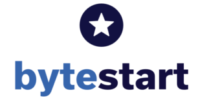One of the biggest obstacles to growth for start-up businesses is investment. Investors are often reluctant to commit their money to a new business with a promising idea but no track record of success.
Fortunately the Government lent a helping hand in 2012, and introduced the Seed Enterprise Investment Scheme (SEIS) to help smaller, riskier companies attract investors willing to take a punt on a bright idea becoming a successful business.
What are the incentives for investors?
Investors can claim up front income tax relief on up to 50% of the amount invested (which can also be applied to the previous year’s income tax bill), which is capped at £100,000 per annum. The shares must also be held for a period of three years to preserve this income tax relief.
If the chosen investment should fail, the investor can obtain loss relief which offsets the loss made during the investment against tax on other income generated by the investor.
There is no Capital Gains tax to pay on profits following the sale of the shares provided that they have been held by the investor for at least three years.
Investors also benefit from 100% Inheritance Tax relief against the value of the shares, granted two years after the date of the initial purchase.=
Is your company eligible for investment through SEIS?
To qualify for SEIS, your company must be a UK operated unquoted company, undertaking a substantial part of its work from a fixed UK base, and not trading on a recognised stock exchange.
In terms of size, your company must have a maximum gross asset value of £200,000 and less than 25 full time employees.
Your company must also be carrying out a “qualifying trade” with the aim of making profit and have carried out that trade for less than 2 years.
Tide Business Bank Account - £50 Cashback!Simply open a free business current account to qualify. You can open a savings account at the same time and earn 4.33% APR variable on your surplus funds! Read our Tide review |
Thankfully, most trades are ‘qualifying’. The list of ‘non-qualifying trades’ includes;
- Certain financial activities,
- Farming,
- Property development and
- Legal or accountancy services.
Non-qualifying activities, cannot form all, or a substantial part of, the business activity. The full list of excluded activities are listed on the HMRC website here.
Your company can have received previous investment (provided that the amount already received does not exceed £150,000). However it cannot have previously received Enterprise Investment Scheme (EIS) or Venture Capital Trust (VCT) investment.
Does the investor qualify for SEIS?
Be ready to talk to any potential investors about SEIS relief, but be wary of the following parameters within which an investor must fall in order to qualify for the relief:
- The investor must be an individual rather than a corporate entity or trust.
- The individual must be liable for UK income tax
- The investor must not be ‘connected’ with the company, which means it cannot have an interest in the company (be it voting rights, share capital or rights to assets on a winding up) of more than 30%, or be an employee, or have a close relative as an employee, in the company. There are however, no restrictions on the investor being a director of the company.
- The investor must not have invested more than £100,000 in that year in SEIS qualifying companies.
- To benefit from the relief, the investor must hold the shares for 3 years.
Practical Considerations
It is important to note that SEIS relief only applies to ordinary shares and so you cannot offer an incoming investor shares with additional rights built in.
FreeAgent - Brilliant Accounting SoftwareFreeAgent accounting software for sole traders and limited companies. 55% off first 6 months + 30-Day Free Trial. |
Additional rights might be a preferred right to a dividend ahead of other shareholders or a right to a greater return on the capital of the company on winding up.
These rights may be beneficial and appealing to the incoming investor but they would mean that the incoming investor’s investment would not qualify for SEIS.
If in doubt as to whether your company’s share capital is ordinary, if your company was incorporated with unamended model articles and you have not varied the rights attached to the shares since its incorporation, then the shares in the company are ordinary shares.
Shareholder rights
Start-ups with more than one founder may well decide to have a shareholders agreement between them to govern their relationship with the company. If the incoming investor is going to sign up to the shareholders agreement then it is important that the agreement itself does not offer the investor any additional protection from risk.
Anti-dilution provisions are an example of such protection. When a new investor comes in and shares are allotted to that investor, the current investors will, in the absence of anti-dilution provisions in the shareholder agreement or articles, have a smaller percentage of the shares in the company than they had before the new investor got on board.
Consequently provisions are sometimes included in the shareholder agreement which obliges the Company to allot new shares to the existing investors in such amounts that will protect their percentage shareholding post investment. Such a protection would however, invalidate any SEIS status for the existing shareholders.
Timing of SEIS investments
Timing is also an important consideration. You can only allot SEIS shares once you have received the investment funds. This needs to be reflected in any shareholder/investment agreement and you will need to make sure that you hold the relevant board meetings and shareholders meetings to reflect that.
You cannot, for example, have an arrangement with an investor whereby the company allots them the shares and they pay their investment to the company in tranches.
Conclusion
The administrative hoops to jump through to obtain SEIS compliance can often feel uncertain and therefore daunting.
HMRC has created an Advance Assurance facility to help ease the process for both investors and entrepreneurs with its SEIS-compliant certification (although it is likely that the information requirements will be increased following an announcement in the Budget 2017 that to qualify for investment under the SEIS, the company must be a genuine entrepreneurial company with an objective to grow and develop).
Nonetheless, SEIS continues to provide a generous tax break that both empowers entrepreneurs and encourages investment in early stage UK businesses.
This guide has been written exclusively for ByteStart by Julia Hollis and Michael Daley, solicitors in the Corporate Commercial team at Winckworth Sherwood LLP. Winckworth Sherwood LLP is a full service law firm and provides commercial and corporate legal advice to businesses across the spectrum of UK industry, from dynamic start-ups through to established multi-nationals.





